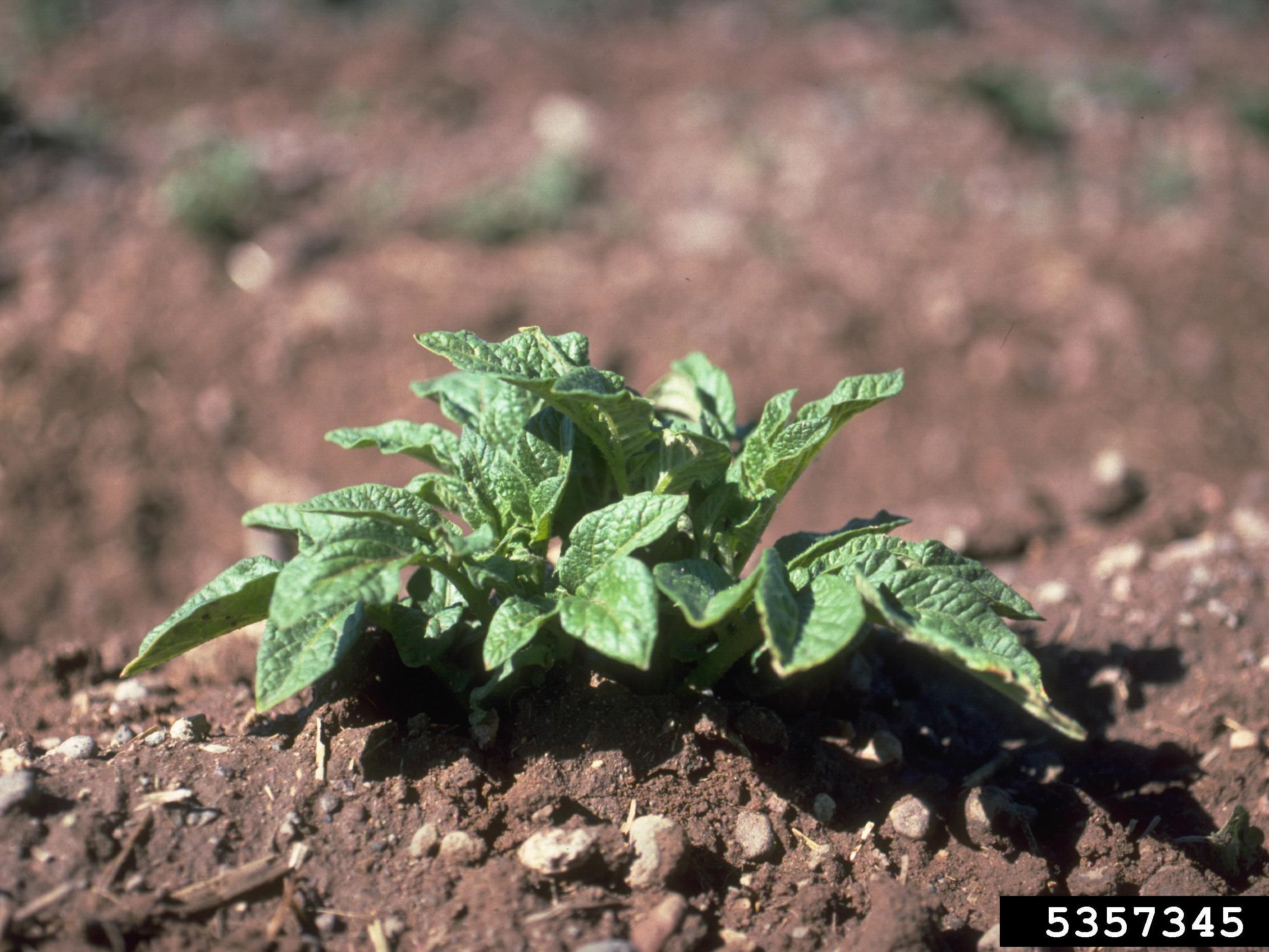 Growing Irish Potatoes - March 17, 2021 Jeff Schalau, Agent, Agriculture & Natural Resources University of Arizona Cooperative Extension, Yavapai County Irish potatoes are easy to grow in the home garden. Many varieties are available: heirloom, russet, yellow, white, red, blue, fingerlings, and more. All types should produce well with proper soil preparation, planting date, irrigation, and cultural practices Potatoes are an underground stem called a “tuber”. The “seed stock” you plant is a potato tuber which has been grown under conditions that minimize disease and not treated with compounds used to prevent sprouting as used on potatoes at the market. Potatoes can be planted beginning in late April or early May and then throughout the summer. To start your potato patch, select an area where other crops in the nightshade family (tomatoes, peppers, eggplants) were not grown in the previous year (or longer). Next, decide how many pounds of potatoes you would like to harvest. Five pounds of seed potatoes will yield between 45 and 70 lbs. of potatoes and will require a garden area of about 10 x 12 feet. Always order certified seed potatoes to avoid disease problems. I recommend ordering at least two varieties for comparison and keeping records of their performance. Consider planting both an early maturing and a medium or late maturing variety. Potatoes are best grown in well-drained soil with full sun. Loosen the soil with a broad fork or shovel and incorporate two to four inches of compost (or other organic matter such as alfalfa) into the soil to a depth of 10-12 inches. A soil test would also let you know other nutrients that may need to be added such as phosphorus. The rows should be about 30 to 36 inches apart. After your seed potatoes arrive, store them in a cool dark place (50-60 degrees F). In a week or so, they may begin to sprout. Cut each seed potato into five or six pieces making sure there is an eye (or sprout) in the center of each piece. The cut pieces can lie exposed to air for 24 hours before planting to allow them to callous over. This can increase their ability to grow rapidly following planting and avoid rotting. Once the soil has been amended and soil temperatures have reached 50 degrees F, its time to plant. Many gardeners dig a 10” deep trench, but this is not necessary. It is simpler to open the soil with a shovel and place the seed potato eye or sprout up, about 1-2 inches deep. The spacing should be about 10-12 inches between each piece of seed potato. When the potato plants reach about six to eight inches, you will need to “hill” the potatoes with a few inches of soil. This hilling is also called "laying-by." This increases the amount of stem in contact with the soil which will increase yields. It also prevents the developing potatoes from turning green. The green color is undesirable and is caused by the compound solanine. This happens when potatoes are exposed to light and can also cause potatoes to be bitter. Irrigate your potatoes often to maintain constant soil moisture. Erratic irrigation stresses the plants and can result in dry pockets (hollow heart) inside the potatoes. Weeds should be controlled by manually pulling. Be careful not to damage your potato crop is using a hoe. Watch for insects. Potatoes can get aphids, flea beetles, blister beetles, leafhoppers, Colorado potato beetles, and other pests. Areas of the garden known to have grubs should be avoided. If insecticide treatment is needed, make sure that the measures are either non-toxic/organic or the pesticide used is labeled for use on potatoes. Fungal diseases can also affect potatoes, and these are not easily treatable. Crop rotation is a good preventative measure. Early potatoes can be harvested when they reach an edible size. Just poke around the soil and see how big they are to see if they are ready to harvest. Midseason and late potatoes are usually ready to dig when small fruits (similar to tomatoes) form and begin to die back. Dig potatoes gently to avoid damage and store potatoes in a dark location at 38 to 40 degrees F. Additional resources, including two YouTube videos, are included below. You can follow the Backyard Gardener on Twitter – use the link on the BYG website. If you have other gardening questions, email the Master Gardener Help Desk in Prescott (prescottmg@gmail.com) or Camp Verde (verdevalleymg@gmail.com) and be sure to include your name, location, and phone number. Find past Backyard Gardener columns or provide feedback at the Backyard Gardener web site: https://cals.arizona.edu/yavapai/anr/hort/byg/. Images  Young potato (Solanum tuberosum) plant emerging (Mark McMillan, Colorado State University, Bugwood.org).
Young potato (Solanum tuberosum) plant emerging (Mark McMillan, Colorado State University, Bugwood.org). Mature potato (Solanum tuberosum) plant with flower visible (Lesley Ingram, Bugwood.org)
Mature potato (Solanum tuberosum) plant with flower visible (Lesley Ingram, Bugwood.org) Young potato (Solanum tuberosum) plant showing tuber formation (Howard F. Schwartz, Colorado State University, Bugwood.org).
Young potato (Solanum tuberosum) plant showing tuber formation (Howard F. Schwartz, Colorado State University, Bugwood.org). Harvesting potatoes (Edward Sikora, Auburn University, Bugwood.org).
Harvesting potatoes (Edward Sikora, Auburn University, Bugwood.org).Ron Patterson, Utah State University Extension Agent, discusses "How to Plant Potatoes". Ron Patterson, Utah State University Extension Agent, discusses "How to Make Potato Hills". Additional Resources Home Garden Potatoes, University of Georgia Extension extension.uga.edu/publications/detail.html?number=C1011&title=Home%20Garden%20Potatoes Growing Potatoes in Home Gardens, University of Minnesota Extension extension.umn.edu/vegetables/growing-potatoes Green Potatoes: The Problem, University of Nebraska Lincoln Institute of Agriculture and Natural Resources cropwatch.unl.edu/potato/greening |